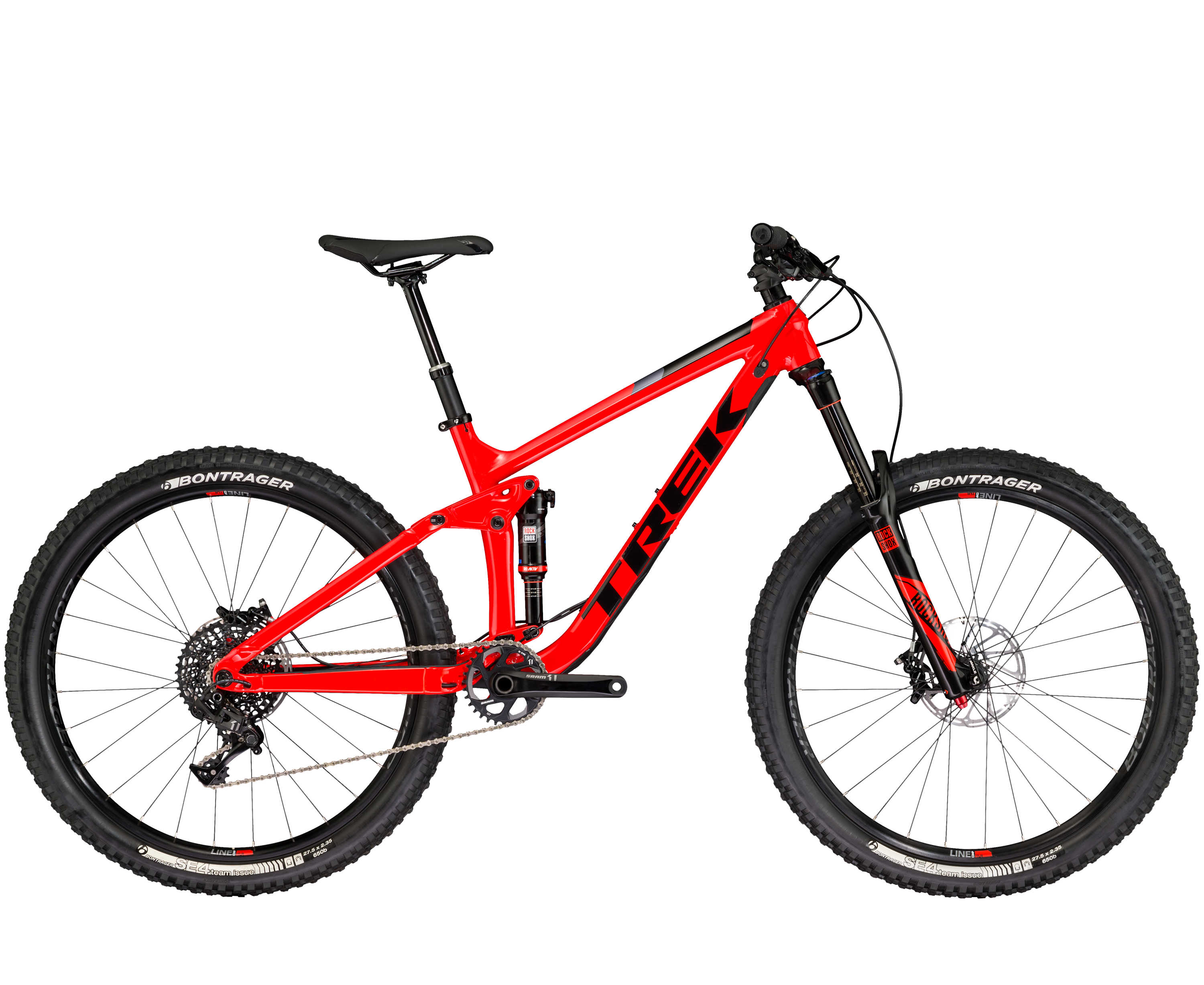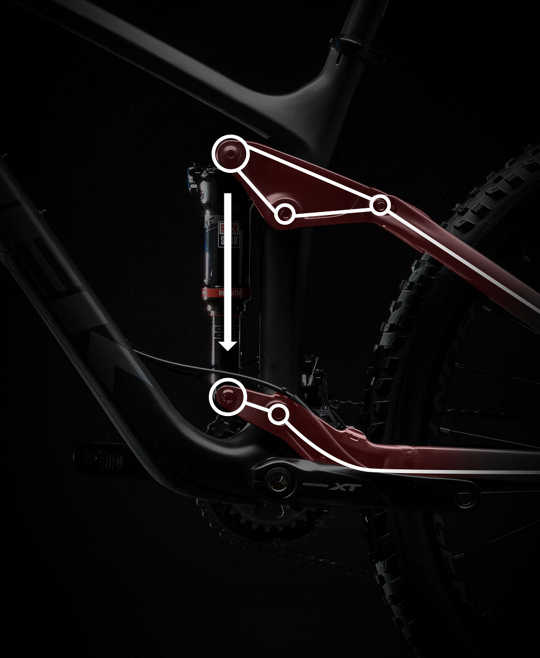2017 Trek Remedy 9 Race Shop Limited
Size Tested: 18.5”
Geometry: (Here)
Build Overview:
- Drivetrain: Sram X1
- Brakes: SRAM Guide RS
- Fork: RockShox Lyrik RC, Dual Position Air
- Rear Shock: Rockshox Deluxe RT3, RE:aktiv
- Wheels: Bontrager Line Comp 30
Wheels: 27.5′′
Travel: 150 mm rear / 160 mm front
Blister’s Measured Weight: 30.9 lbs (14 kg) without pedals
Reviewer: 5’9”, 155 lbs.
Test Locations: Utah, Montana, British Columbia
Test Duration: ~3 months
MSRP: $4,499.99

Intro
The Remedy has been in Trek’s lineup for a while now, but it underwent significant revisions for 2017.
The Fuel EX exists one notch down in Trek’s hierarchy, and it’s a bike that’s well suited to trail duties. But as the Fuel EX also underwent revisions that made it a more capable bike in demanding terrain, the Remedy needed to step up its game to avoid unnecessary overlap.
And step up its game it did. Despite not having the most travel and not being the slackest, lowest, heaviest, or whatever other metric you want to use, the Remedy is an impressive performer on the roughest, steepest trails around.

The Frame
The Remedy series of bikes is available in both carbon (denoted by a decimal place, i.e., “9.9”) and aluminum versions (no decimals). The Remedy 9 Race Shop Limited is the top-of-the-line aluminum version, and the “RSL” moniker means it gets some tweaks to the parts spec (more on that below).
In my humble opinion, Trek does a ridiculously good job at making aluminum frames. There are plenty of aluminum frames on the market that kind of get glossed over in favor of their lighter, sexier carbon counterparts, but the Remedy has a few things going for it that not many other frames (aluminum or carbon) offer.
For starters, the Remedy runs on Trek’s ABP suspension design, which essentially means there’s a pivot concentric to the rear axle. This is generally similar to split-pivot designs found on bikes from Salsa, Devinci, and some others, and I’ve been a fan of this design on every bike I’ve ridden that’s used it. It’s particularly good about staying active while on the brakes, which is one of the suspension characteristics that I never really notice until I get on a different bike that isn’t as good about it.
The Remedy also uses Trek’s “Full Floater” design, which essentially means the rear shock is suspended between the rocker link at the top and the chainstays at the bottom.

That design means that both ends of the shock move as the suspension compresses, which in turn means that Trek has a bit more control over the suspension kinematics. A side bonus is that it also means that Trek doesn’t have to worry about reinforcing the front triangle at the bottom of the shock, so it potentially saves a bit of weight.
But there are a couple of other less obvious features that make the Remedy stand out. First, the new Remedy has Trek’s “Knock Block” system, which is essentially a keyed stem that’s unable to turn past about 80° to either side. Why? Because the downtube is formed in a way that the fork wouldn’t clear it — the Knock Block is essentially a bump stop to keep the fork from gouging the downtube.
But why not just form the downtube so it’ll clear the fork? Because, by making the downtube run straight into the bottom of the headtube, Trek is able to make one of the most critical junctions on the bike stronger, stiffer, and lighter, while at the same time making it lower. And it’s that last part that has a pretty noticeable effect on the ride — the Remedy’s front end is among the lowest of any bike with a 160mm-travel fork that I’ve ridden (more on that in a bit).
The downside of the Knock Block system? You’re stuck with a Bontrager stem, at least until someone else makes Knock Block compatible parts. I didn’t, however, notice any downside of the Knock Block on the trail — no issues with the turning radius in tight switchbacks, and I can’t do bar spins anyways.
The internal cable routing on the Remedy is among the best I’ve seen. It’s easy to get cables in and out of it, the ports are modular, so you can make whatever cable go into whatever hole pretty easily, and (in a stroke of simple brilliance) there’s an integrated zip tie hole on the underside of the downtube that keeps everything cinched down and quiet.
And last but not least, there’s a really good water bottle mount. It fits full-sized bottles with room to spare, and it’s not on the underside of the downtube, so I didn’t wind up with horse poo on my water bottle even once!
So I think the frame is well thought out. But is there room for improvement? Yep. The built-in rubber protectors on the chainstays could be a bit bigger; the chain bunged up the paint on the stays a bit. And especially on an aluminum frame, I’d rather have a threaded bottom bracket over a press fit that will inevitably start creaking at some point.
NEXT: The Build, Fit and Geometry, Etc.

Great, detailed (yikes!) review on a great bike, Noah. I’ve got the predecessor in 29 and love it. Kinda hoping Trek adds that model next year.
I’ve also got a 2016 Fuel EX that I use for endurance racing (disclosure — Trek helps me out in this regard). I’ve been pounding this bike for nearly two full seasons (including a few laps up, over and around Tally Mountain in your back yard). A few observations on both bikes FWIW:
1. Love the water bottle capability. Both of mine (21 or 21.5) will hold a one-liter Zefal Magnum bottle. Heaven!
2. I’ve never had FS bikes with longer lasting, quieter pivots. On new bikes, I pop out the seals from each bearing, and top them off with Dumonde Tech liquid grease. Never had a peep from either bike, going on two seasons for the Fuel EX and three seasons for the Remedy.
3. The Reaktiv rear shocks are everything they are cracked up to be for trail riding. Like a Brain that works right. For actual racing, I use a shock with firmer lockout valving for the inevitable gravel road climbing sections in just about every endurance race.
4. As an old school guy, I wondered about the integrated lower headset bearings. Turns out to be a non-issue, and the Remedy has seen a LOT of rugged, rocky riding.
Amazing review. Extremely detailed and well thought through.
Noah — thank you for the detailed review. I have been looking at buying the Fuel EX 9.8 and was wondering how much I could infer from your review of the Remedy in considering the Fuel EX? In general the review seems very favorable of the Remedy and trying to ascertain if you were to review the current Fuel EX if you would reach similar conclusions. I know it’s a difficult question to answer but hoping for some guidance. I’m coming off of a 10-year old 26″ Santa Cruz Superlight and would like to upgrade. I’m a little cautious of going all the way up to a 29er vs. a 27.5, but I like the components on the Fuel EX 9.8 and some of the common characteristics of the Remedy in your review hit home with me. I live in Marin County and truth be told do most of my riding on fire roads, although I plan to increase riding of single tracks. A local bike shop in Fairfax is really pushing the Norco Optic 9.2 or 7.2, but I haven’t seen any recent reviews of Norco to assess.
Love your reviews and keep up the great work. I hope Jonathan is healing well!
Thanks,
Jim
Great review